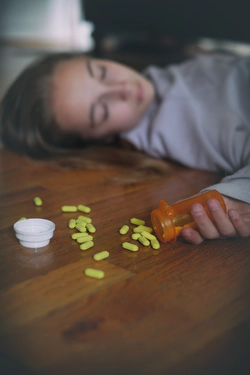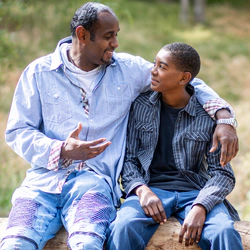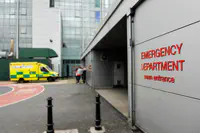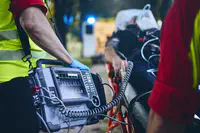Driven by Fentanyl, Teenage Drug Overdoses Doubled
Experts believe that the recent spike in teen overdose deaths have been driven almost entirely by fentanyl overdoses

Every parent wants what is best for their teen, to grow up and lead a healthy, fulfilling, and rewarding life. With that in mind, most parents recognize that youth experimentation with drugs and alcohol is an activity that threatens their sons’ and daughters’ prospects for a healthy future.
Given that teen drug use rates had fallen slightly in recent years, many parents had felt that their children have a brighter, safer future ahead of them. Unfortunately, new research reveals that while drug usage rates did recede somewhat, teen drug overdose deaths more than doubled in just one year.
A Look at the Data
Teens are less likely to use drugs now than they were in previous years, but they are significantly more likely to die from an overdose when they do use drugs. That’s the summary of a recent study published in the JAMA Network Open.1 According to the findings, 2020 and 2021 saw significant increases in teen drug overdose fatalities, compared to the previous decade that was marked by a gradual recession in teen drug use and teen drug overdoses.
The research shows that teen overdose deaths soared from 492 to 954 in 2020, a 94% increase. Then, overdoses surged again in 2021, going up another 20%. According to the researchers, the increase was almost entirely attributed to fentanyl overdoses. Drug fatalities among teens reached 253 in 2019, but jumped to 680 in 2020. And by the end of 2021, fentanyl deaths among teens had accounted for 77% of all drug overdoses in this age group.
Further, teens are almost exclusively overdosing on fentanyl-laced drugs in a non-intentional way, namely, by experimenting with pills that they think are opioid painkillers but which are fentanyl analogs or fentanyl-laced synthetic drugs pressed into a pill format that misleadingly looks like name-brand opioid pain relievers. Such substances are called counterfeit pills.
“Teenagers don’t seek out illicit opioids, [but] they do seek out prescription opioids and that has always been one of their favorite drugs: Vicodin, OxyContin, hydrocodone. It is estimated that at least one third of those illicitly manufactured pills are contaminated with fentanyl.”

Though she was not directly involved in the study, the Director of the National Institute on Drug Abuse, Dr. Nora Volkow, warned about the study’s dire findings.2 In her own words, “Teenagers don’t seek out illicit opioids, [but] they do seek out prescription opioids and that has always been one of their favorite drugs: Vicodin, OxyContin, hydrocodone. It is estimated that at least one third of those illicitly manufactured pills are contaminated with fentanyl.” According to Dr. Volkow and the study’s authors, it’s clear that teens don’t know they’re taking fentanyl. That fact makes it even more apparent just how important it is that parents educate their teens about the risks of counterfeit pills.
The research published in JAMA Network Open is backed up by Centers for Disease Control and Prevention findings that reported a steep increase in teen overdose deaths in recent years. According to the CDC, drug overdose deaths for adolescents aged 15-19 declined between 2007 and 2014, but increased in 2015.3
Combining the CDC data with the information from the JAMA Network Open study cited earlier, one can see that drug overdose rates for teens fell again, slightly, from 2015 to 2019, but then surged by an alarming 94% in 2020, to 954 deaths. Then, in 2021, overdoses spiked another 20%, with over 1,140 teens losing their lives to drugs. The 2021 overdose fatality rate for teen Americans is thought to be the highest rate recorded to date for this demographic.
The warning could not be more clear. Though fewer young people may be using drugs than in previous decades, drug use as an activity is undoubtedly far more dangerous for young people than it used to be, primarily due to the proliferation of illicit fentanyl into the drug supply.
Drug Prevention and Treatment

The parents and grandparents of today must understand just how dangerous drug use is for young people. Parents and grandparents need to see that there is no more “youthful experimentation” in the way that Baby Boomers and other older generations may be trying to relate to present-day teen drug use. Drug use today is much more dangerous than it used to be, and a doubling in teen overdoses in just one year is a stark reminder of that fact.
Parents must educate their teens on the risks and dangers of drug use. Parents should start informing their kids about the harmful nature of drugs and alcohol when their children are as young as possible, as young as their parents deem appropriate.
Further, if a parent finds out that their teen or young adult son or daughter is experimenting with drugs and alcohol, they need to do everything possible to get their son or daughter into a qualified, residential drug and alcohol addiction treatment center. They must not wait until it is too late, until their son or daughter overdoses. The lethality of fentanyl and the doubling of teen overdose deaths in 2020 should motivate parents to get their addicted teens help as soon as possible.
Sources:
-
AMA Network. “Trends in Drug Overdose Deaths Among US Adolescents, January 2010 to June 2021.” 2022. JAMA Report. jamanetwork.com ↩︎
-
NPR. “Teen drug overdose deaths rose sharply in 2020, driven by fentanyl-laced pills.” 2022. NPR Article. npr.org ↩︎
-
“Drug Overdose Deaths Among Adolescents Aged 15–19 in the United States: 1999–2015.” 2017. CDC Research. cdc.gov ↩︎





 ®
®